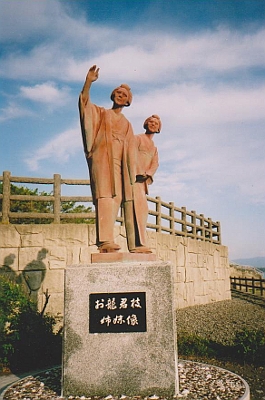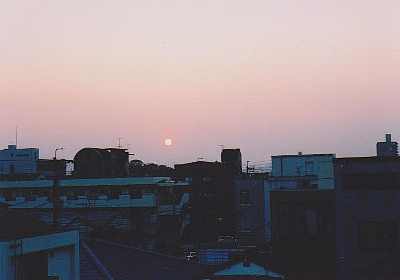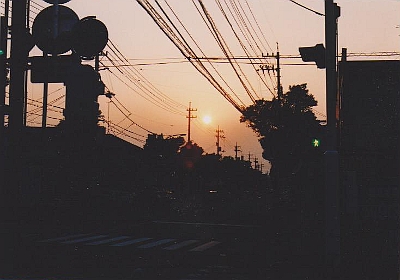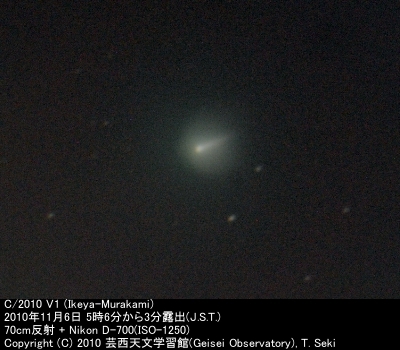November 23, 2010
There is a bronze statues of Ryoma's wife Oryo and her younger
sister Kimie on Kotogahama beach, not far from Geisei Observatory.
Along the beach there is a stretch of pine trees planted
in 1835, around the time when Ryoma was born. The beach is called Kotogahama
(the beach of Koto; Koto is a traditional string instrument) because the
pine trees along the beach make a koto-like sound when gale-force wind
blows. Around the time when Geisei Observatory was built, it was simple
and rustic but a beautiful beach. It is now urbanized coexisting with facilities
such as an open-air theater and salt-water swimming pool. I fondly remember
the days when I strolled along the long stretch of the beach by myself
after finishing morning observation.
Wandering around the beach in the morning
I think of people of bygone days
NHK TV drama "Ryoma-den" (The story of Ryoma) is
now concluded, but I realized that there were people associated with the
drama in Geisei village. The husband of Oryo's sister Kimie was from Geisei
and also a samurai from Tosa kinnoto (Loyalist clique of Tosa). The bronze
statues of Oryo and her sister on Kotogahama raise their arms toward the
sky. Of course, they are calling out to Ryoma (Minor Planet 2835) flying
across the sky. The statue of Ryoma at Katsurahama beach is gazing at the
eastern horizon where Kotogahama lies.

The statues of the sisters Oryou and Kimie
An unseasonal "yellow-sand" dust from the Chinese
mainland has been hampering observation. The weather station announced
the arrival of the dust sometime after November 10, but prior to it we
noticed a considerable level of yellow dust on November 9. Even in clear
skies, the stars look dull and a few magnitudes seem to be lost.
The photographs show the conditions created by the yellow
dust in the evening of November 9 seen from the rooftop (Observatory Code
370) and the street.

The evening sky viewed from our rooftop

This is an image of Comet Ikeya-Murakami taken immediately
after its discovery. It is moving southward in Virgo at 10th magnitude
and low in the eastern sky around 5 o'clock in the morning. Through the
15cm refractor at 22x mounted on the 70cm reflector, the comet appears
as a nebula about 5 minutes in diameter. It is visually estimated at 9.5
magnitude. In the photograph is seen a faint tail-like trail. The tail
is gradually growing, while the comet brightness is decreasing.
I have been bravely claiming that there is definitely
a chance of visual discovery if seriously searched despite fierce competition
from professional searches by LINEAR project and others. My word has been
proved correct without a doubt by Messrs. Ikeya and Murakamifs recent discovery
and the earlier discovery by Mr. Machholz.
This comet's orbit has a small 8-degree inclination suggesting
the possibility of being a short period comet.

C/2010 V1 (Ikeya-Murakami)
3-minute exposure at 05:06 November 6, 2010, JST
70cm reflector with Nikon D-700 at ISO 1250
Copyright (C) 2010 Geisei Observatory, T. Seki




